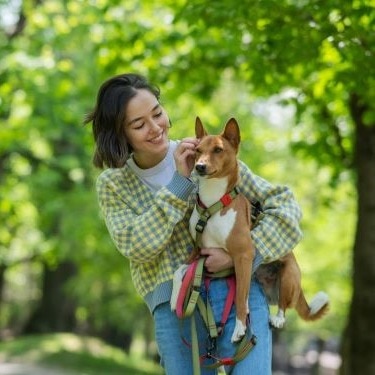
-
Find the right food for your petTake this quiz to see which food may be the best for your furry friend.Find the right food for your petTake this quiz to see which food may be the best for your furry friend.Featured products
 Hill's Science Diet Adult Chicken & Beef Entrée Dog Food
Hill's Science Diet Adult Chicken & Beef Entrée Dog FoodChicken & Beef Entrée in a delicious loaf with complete & balanced nutrition to help keep adult dogs active and healthy
Shop Now Adult Large Breed Chicken & Barley Recipe Dog Food
Adult Large Breed Chicken & Barley Recipe Dog FoodSupports healthy joints, lean muscle, and beautiful coat for large breed dogs
Shop Now Adult Chicken & Barley Recipe Dog Food
Adult Chicken & Barley Recipe Dog FoodSupports lean muscle and beautiful coat for adult dogs
Shop NowFeatured products Adult Tender No Corn, Wheat, Soy Chicken & Vegetables Stew Cat FoodShop Now
Adult Tender No Corn, Wheat, Soy Chicken & Vegetables Stew Cat FoodShop Now Adult Turkey & Liver Entrée Cat Food
Adult Turkey & Liver Entrée Cat FoodPrecisely balanced nutrition with the delicious taste of minced turkey & liver to help fuel the energy needs of cats during the prime of their life
Shop Now Senior Vitality Adult 7+ Tuna & Vegetables Stew
Senior Vitality Adult 7+ Tuna & Vegetables StewImproves Everyday Ability to Get Up & Go
Shop Now -
Dog
- Dog Tips & Articles
-
Health Category
- Weight
- Food & Environmental Sensitivities
- Urinary
- Digestive
- Joint
- Kidney
-
Life Stage
- Puppy Nutrition
- Adult Nutrition
- Senior Nutrition
Cat- Cat Tips & Articles
-
Health Category
- Weight
- Skin & Food Sensitivities
- Urinary
- Digestive
- Kidney
-
Life Stage
- Kitten Nutrition
- Adult Nutrition
Featured articles How to Properly Mix Wet & Dry Pet Foods
How to Properly Mix Wet & Dry Pet FoodsAn Orange cat eating from a bowl filled with mixed food
Read More The Science Behind Our Love for Pets
The Science Behind Our Love for PetsLearn the scientific reasons why we have such strong connections with our pets, and what science says about the love between humans and our furry friends.
Read More What Is Littermate Syndrome? Pet Adoption Guide
What Is Littermate Syndrome? Pet Adoption GuideLearn more about littermate syndrome in dogs and cats and how to successfully navigate adoption and early socialization processes.
Read More -


For some folks, as the weather takes a turn for the chilly, they curl up in a ball on the couch with a roaring fire and a hot cup of cocoa, but for sled dog teams it's go time!
In many areas of the world, cooler temperatures mean the strong possibility that snow is right around the corner, a time of year when you want to stay inside and hibernate until the bluebird of spring comes calling. But for sled dogs and those who work with them, their busy season (and the fun!) is just beginning.
Mush!
The image of dogs sledding on the snow conjures up picturesque scenes with tall, flocked evergreen trees and glistening open fields, but make no mistake: these powerful dogs are hard at work, and they love what they do!
After all, these pups are following their instincts to run long distances and pull heavy loads. They start their training as puppies, and by the time they're youngsters, they run with the big dogs to develop their social skills and learn commands from their musher, says PetMD.
And just what is a musher and what does he or she do? The word "mush" is derived from the French word marche, meaning "march." The musher, then, is the person who controls the dog sled team. Sometimes, mushers run alongside their dogs at certain points during a race, although there must be another musher on hand to command the sled.
According to National Geographic, the most popular sled dog breed is not the Siberian husky or Alaskan malamute, two common breeds associated with sledding. The most popular sled dog breed is the Alaskan husky, a "mutt" breed especially known for its strength and stamina. Typically, sled dogs weigh between thirty-five to sixty pounds, and they can pull twice their body weight or more.
What Makes a Great Sled Dog?
Mushers choose sled dogs based on their stature as well as their weight, fur, and ability to work well with others, among other criteria. Dogs on sled teams are superb athletes, lean, and muscular with healthy eating habits. There is no limit to how many dogs can pull a sled, so depending on his or her task, a musher may have anywhere from two to three dogs for a smaller job, such as transporting supplies, up to twelve or sixteen pups.
For protection in cold climates, a sled dog relies on his thick undercoat for warmth and wears booties to protect his sensitive paws. Prior to running races (such as the famous long-distance Iditarod, which takes place in Alaska every year, or the Yukon Quest) and performing non-racing duties, each dog undergoes a thorough medical examination to ensure he can safely work.


Tasty Tips
Members of the Team
Each dog assumes an important role in the team, identified by his position in the row. Typically, the dogs are harnessed together in two parallel rows with the lead dog in front setting the pace for the entire team. With a keen sense of smell and superior intelligence, he leads the trail. The swing dogs are next. They carry the team through turns and guide the team dogs, the dogs that make up the largest part of the pack. Team dogs are positioned in the center based on their power and strength. Directly in front of the musher and attached to the sled are the heel dogs. These dogs are the strongest of the pack as well as the most calm in stressful situations. Heel dogs are the smoothest runners so as not to tip over the sled on tight turns.

The pups play an important role outside of racing, too. At Denali National Park & Reserve in Alaska, a kennel of approximately 35 dogs help protect and manage the park's two million acres of wilderness. These amazing dogs carry staffers into remote areas of the land that aren't accessible by motorized vehicle to deliver supplies, among other tasks. The sled dogs are well-cared for in a state-of-the-art kennel that allows visitors. So, if you make it all the way north to Alaska, you can see for yourself how majestic, strong, and beautiful they are!
History of the Sled Dog
Sled dogs played an important role in the settling of the Alaskan frontier as they were able to withstand the cold temperatures required to make the long trek across the open wilderness. TheUS Bureau of Land Management cites that settlers used vehicles similar to kayaks fitted with ski-like runners on the bottom to be pulled by these amazing work dogs to help transport goods and people across the land. Back then, the dogs were of larger size than their more sleek and sinewy counterparts of today that are bred more for racing than hauling. They are an important part of the history of Alaska's and Yukon Territory's settlement. While they don't perform quite the same actions that their ancestors did, today's sled dogs are a magnificent display of power, beauty and agility performing the job that they love to do.
Because of the trust and patience that goes into building a partnership, a very special relationship develops between a musher and his or her dog sled team, one that's built on mutual trust, love, understanding, and respect. If you're ever fortunate enough to experience these dogs at work, don't miss it; you'll be so happy you did.


Christine O'Brien is a writer, mom, and long-time cat parent whose two Russian Blues rule the house. Her work also appears in Care.com, What to Expect, and Fit Pregnancy, where she writes about pets, pregnancy, and family life. Find and follow her on Instagram and Twitter @brovelliobrien.
Related products

Supports healthy joints, lean muscle, and beautiful coat for large breed dogs

Supports lean muscle and beautiful coat for adult dogs

Chicken & Beef Entrée in a delicious loaf with complete & balanced nutrition to help keep adult dogs active and healthy

Chicken & Barley Entrée in a delicious loaf with great taste and precisely balanced nutrition to support 5 essential building blocks for lifelong health
Related articles

Discover how the field of dog science is giving us more and more insights into the inner workings of our furry best friends.

Wondering where can I buy a dog? Consider adoption and explore the pros and cons of adopting a dog from a breeder versus an animal shelter.

Your dog's coat and skin are a big part of your dog's overall health. Ensure you keep your dog's coat healthy, by following these simple tips.

Learn how to help keep your dog's immune system in tip-top shape, including nutritional immune system support for dogs and other strategies.

Put your dog on a diet without them knowing
Our low calorie formula helps you control your dog's weight. It's packed with high-quality protein for building lean muscles, and made with purposeful ingredients for a flavorful, nutritious meal. Clinically proven antioxidants, Vitamin C+E, help promote a healthy immune system.
Put your dog on a diet without them knowing
Our low calorie formula helps you control your dog's weight. It's packed with high-quality protein for building lean muscles, and made with purposeful ingredients for a flavorful, nutritious meal. Clinically proven antioxidants, Vitamin C+E, help promote a healthy immune system.



